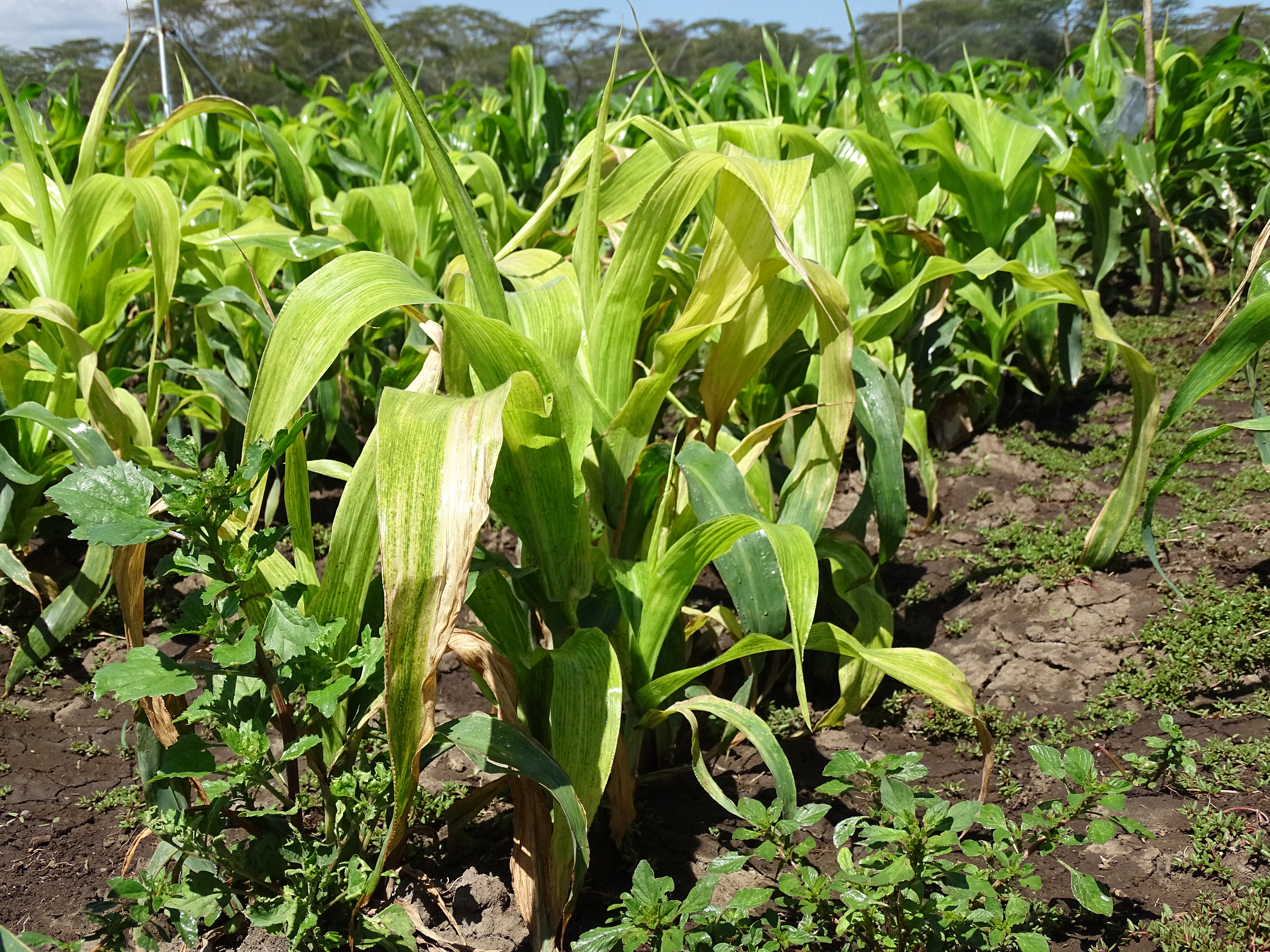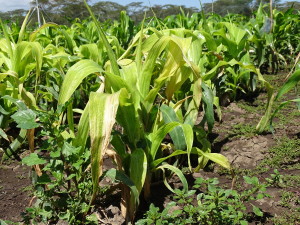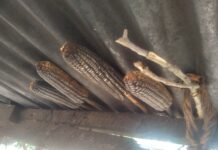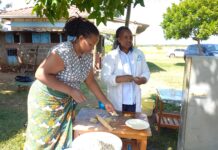By Sophie Mbugua
Dressed in a heavy green jacket, a blue helmet and black pants tucked into black gumboots, Jonathan Mutisya brings his motorbike to a halt, removes his helmet and places it into the rear mirror. With the keys in his left hand, he joins a group of farmers from Mwisuni irrigation scheme meeting with scientists from the Kenya Agricultural Livestock and Research Institute (KALRO) on a Thursday afternoon to discuss a maize problem that has been devastating the Kiboko area residents in Makueni County.
“I lost three acres of maize this July. Everything appeared normal until the maize started developing some yellow strains” says Mutisya “since this area is dry, I thought I hadn’t given them enough water as I had grown them through irrigation from Kiboko springs” He explains
Jonathan is not the only one who has suffered maize loss “I first observed many tiny, white flying insects invade the maize” explains Harrison Musyoki, a members of the Mwisuni Irrigation Scheme “luckily for me I didn’t lose much as I had planted early and by then the scientists had advised us to uproot and burn the affected maize” he adds
Jonathan and Harrison are victims of the Maize Lethal Necrosis (MLN) devastating farmers across East Africa. According to Dr Ann Wangai, a Chief research scientist specialized in plant virology at KALRO, the disease first reported in Bomet in 2012, is caused by a combination of the Sugarcane Mosaic Virus and Maize Chlorotic Mortal Virus.
“The disease has now spread to all maize growing regions in Kenya. It has also been reported in Tanzania, Uganda and Rwanda with unconfirmed reports in Sudan, Burundi, Ethiopia and Democratic Republic of Congo” she explains
What are scientists doing about it?
In 2012, the Government of Kenya in collaboration with the International Maize and Wheat improvement Center (CIMMYT) established a 20 acres MLN screening facility in KALRO Naivasha to evaluate maize germplasm from all over the world.
“The facility has been testing inbred lines, hybrids, commercial varieties and other maize types from CIMMYT, KALRO, both local and international seeds companies” explains Dr Stephen Mugo, a Principal Scientist and CIMMYT Country representative (CCR) in Kenya “we are also working with National Agricultural Research Organizations from eastern, central and southern Africa mainly Uganda, Zimbabwe, Mozambique and Tanzania to identify varieties that are tolerant to MLN”
“We are yet to see anything that is immune to the two MLN viruses but we have gotten some that will give the farmers a level of yield which we are still validating” adds Dr Mugo “The varieties tolerant to MLN will be able to give the farmers appreciable yield compared to the susceptible commercial varieties. In the meantime farmers have to reduce the damaging effects of MLN through crop management practices including early planting, weed control, applying fertilizers, using improved seeds, crop rotation and observing at least a one month maize free period in the year.”
According to Dr. Wangai, to speed up the process of developing MLN tolerant hybrids, any MLN tolerant inbred lines will be taken through the doubled haploid facility that takes 1.5 years to complete a conventional maize breeding process that takes 7 to 8 years. Parent seeds developed rapidly through this process will then be used to develop final hybrids whose seed will be produced by various seed companies in Kenya and in other countries.
How to manage the disease
-
Practice and adapt crop rotation “After harvesting maize, plant non cereal crops such as beans or any other legume or potatoes at the portion you had planted maize to reduce the level of insect vectors” explains Dr Wangai
-
Plant maize early into the season and once a year to avoid a buildup of the virus. According to Dr Mugo, early planted crops suffer less from the disease than those planted later on as insect Vectors build up as the season goes.
-
Uproot any infected plants as soon as they are noticed and feed it to the animals while still green to minimize the spread. “If rotten, burn or burry it as the opportunistic bacteria and fungus that invade a dying plant can harm the animals” explains Dr Mugo
-
Use certified seeds from certified merchants. According to Dr Wangai, the disease can be transmitted through seeds. “Buy seeds protected with pesticides as it protect the plant within the first weeks of growth”















